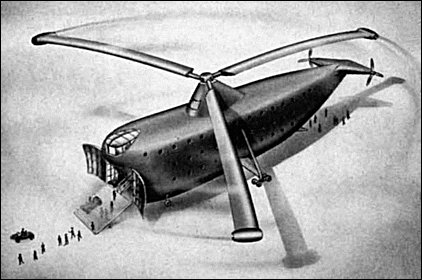Westland Aircraft Company's giant helicopter of the future would have a single rotor of 60m diameter powered by tip-mounted turbo-jets. Designed to carry troops, guns, jeeps, and ammunition, it has entry ramps at both ends of the fuselage. Typical load might consist of 450 troops or three 15-ton tanks.
Hiller Aviation Museum
Warning: mysqli_connect(): php_network_getaddresses: getaddrinfo for mysql5.zone.ee failed: Name or service not known in /data03/virt15346/domeenid/www.aviastar.org/htdocs/helicopters_eng/west_goliath.php on line 54
Fatal error: Uncaught mysqli_sql_exception: php_network_getaddresses: getaddrinfo for mysql5.zone.ee failed: Name or service not known in /data03/virt15346/domeenid/www.aviastar.org/htdocs/helicopters_eng/west_goliath.php:54
Stack trace:
#0 /data03/virt15346/domeenid/www.aviastar.org/htdocs/helicopters_eng/west_goliath.php(54): mysqli_connect('mysql5.zone.ee', 'd14657sa18989', Object(SensitiveParameterValue))
#1 {main}
thrown in /data03/virt15346/domeenid/www.aviastar.org/htdocs/helicopters_eng/west_goliath.php on line 54





